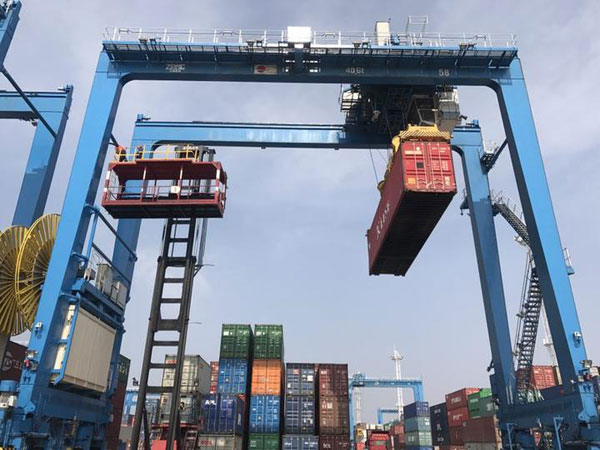Ningbo-Zhoushan Port gets 5G upgrade


A crane lifts a cargo container controlled through the 5G network at Meishan Container Terminal in Ningbo-Zhoushan Port in Ningbo, Zhejiang province on April 16. [Photo/zj.zjol.com]
Meishan Container Terminal at Ningbo-Zhoushan Port in Ningbo, Zhejiang province successfully used 5G technology to control its cranes for the first time on April 16.
"This is the first time that we've used 5G technology in the port, and it marks the country's first attempt at building a smart port based around the 5G network," said Fang Ruli, assistant-general manager of China Mobile Ningbo.
According to Wang Ren, director of the network department of China Mobile Ningbo, wireless equipment and digitalized operations are crucial elements for a modern port to be able to compete at the international level.
The 5G network, with its high bandwidth, low latency, and massive connections, can not only provide highly reliable communications services for automatic port operations, but also reduces costs, with a much simpler device structure than traditional wired communications, said Wang.
This application is a result of an agreement between China Mobile Zhejiang and Zhejiang Seaport Group reached last September for building a 5G base station in the port, with expected 5G coverage of 450,000 square meters.
China Mobile Ningbo rebuilt the communications links and tested the 5G network technologies in the Meishan terminal this year before they were put into use.
"Going forward, we intend to maximize benefits from the capabilities of 5G technologies, automating as many of our facilities as possible, and introducing driverless forms of transport for cargo," said Chen Hui, project manager of China Mobile Ningbo.
MOST POPULAR
- 1 $39.7 billion worth of deals inked at Airshow China
- 2 China announces tax relief measures to stabilize real estate sector
- 3 A look at China's economy in October, 2024
- 4 Public holiday extension announced
- 5 China's NEV annual production hits 10 million milestone amid global carbon reduction efforts
Editors' Picks
 Infographic:
Golden jubilee of China-Brazil relations
Infographic:
Golden jubilee of China-Brazil relations
 Infographic:
A look at China's economy in October 2024
Infographic:
A look at China's economy in October 2024





